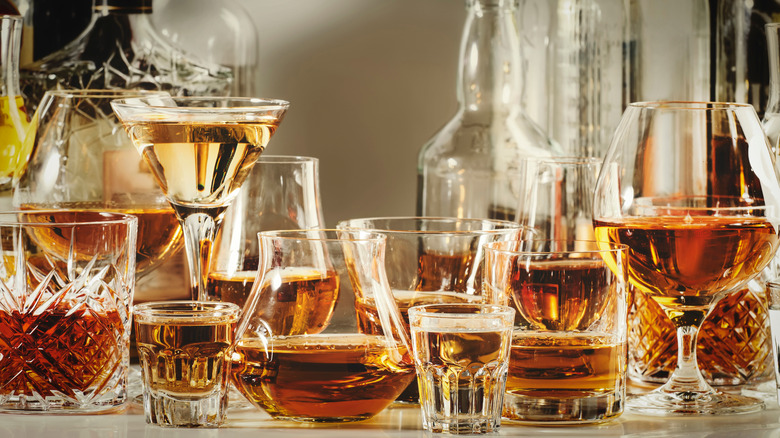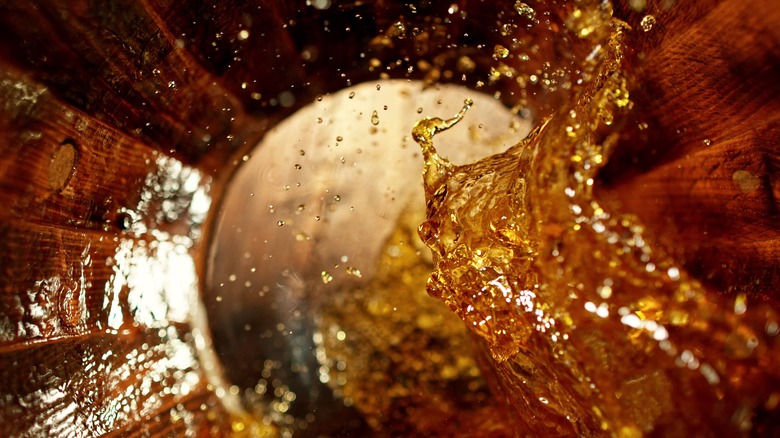The Strict Rules For Adding Color To Whiskies And Bourbons
They say don't judge a book by its cover, but is it OK to judge a whiskey by its color? Both whiskey and bourbon are known for their warm, caramel color. Bottles for both are often clear to display the color for the buyer, and clear glasses are the preferred vessel for the drink.
Color is frequently used to judge the taste of whiskey, but that can be misleading. An aged whiskey is often thought to be darker in color and has more developed aromas and flavors, while a younger whiskey is believed to be lighter in color with less flavor, per Forbes. The truth is that several factors influence how whiskey and bourbons get their color naturally, from the environment (cold, steady climate will result in slow aging) to the casks in which they are kept.
According to Distiller, whiskey and bourbon get some of their colors from the barrels in which they are aged. The two most popular oak barrels for aging whiskey are American white oak and European oak. The first will give the spirit a hint of red, while the second will provide a yellow shade. If a used barrel is repurposed for holding bourbon, it will affect its color, especially if it previously held sherry, brandy, or port. Sometimes, the color of the whiskey or bourbon in your glass may have been altered by the person who helped make it, but there are rules for what is allowed.
The enhanced beauty of whiskey and bourbon
First off, the rules are not the same for all kinds of whiskeys. Bourbon, according to CNBC, cannot have any coloring added to it — only water to decrease its proof. Only the barrel can help naturally color bourbon, according to Distiller, which adds that the same standards are used for straight whiskeys, such as corn, wheat, and rye.
On the other hand, some whiskeys, such as Scotch, can have coloring added to them to darken their appearance. Distiller says that E150a (spirit caramel) is legally allowed as an additive to Scotch. A reason that some companies choose to add artificial coloring is to create consistency in a brand so that all bottles of a certain whiskey have the same coloring. While the name may sound like it would be sweet, caramel coloring doesn't add any flavor to the whiskey, according to Vine Pair.
Distillers are limited in how much coloring can be added to their product. Some whiskeys are allowed to contain up to 2.5% caramel coloring by the Alcohol and Tobacco Tax and Trade Bureau. That being said, don't expect the label of your favorite whiskey to say if caramel coloring has been added, as it's not required, per Distiller.
Next time you pour a glass of whiskey, admire its amber color, but know its beauty may have been enhanced. Its taste, however, will still be pure.

